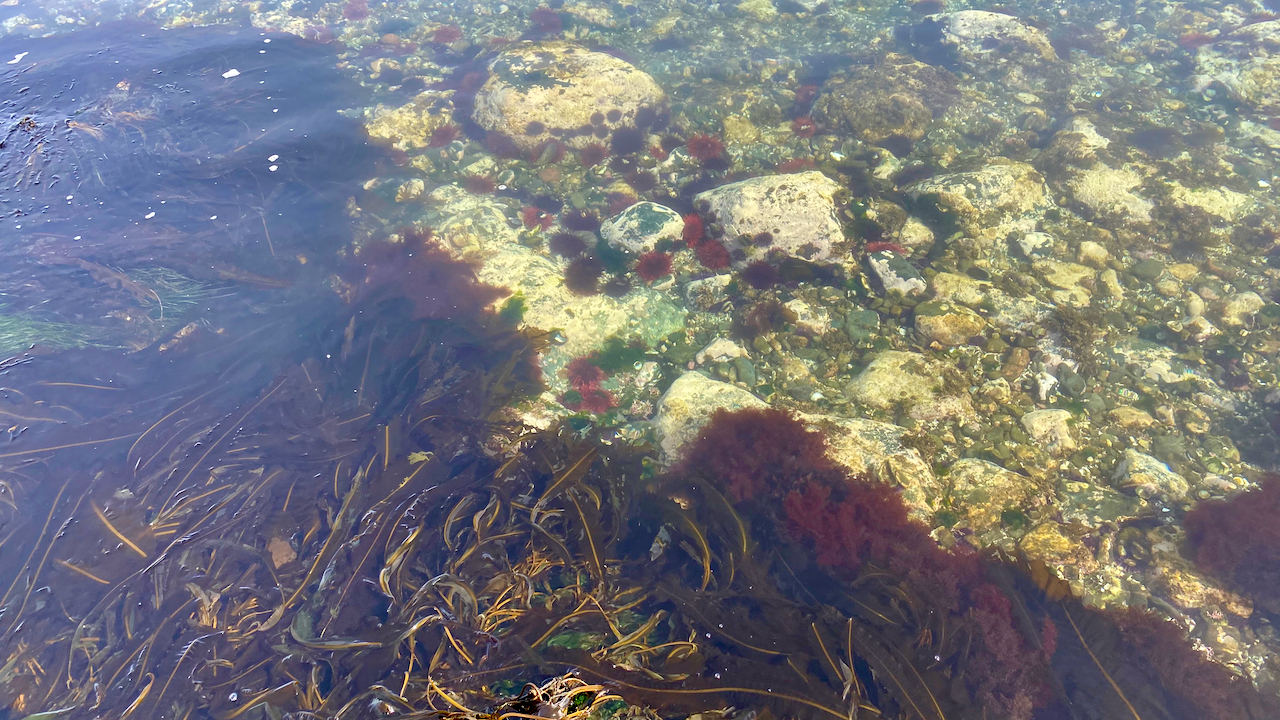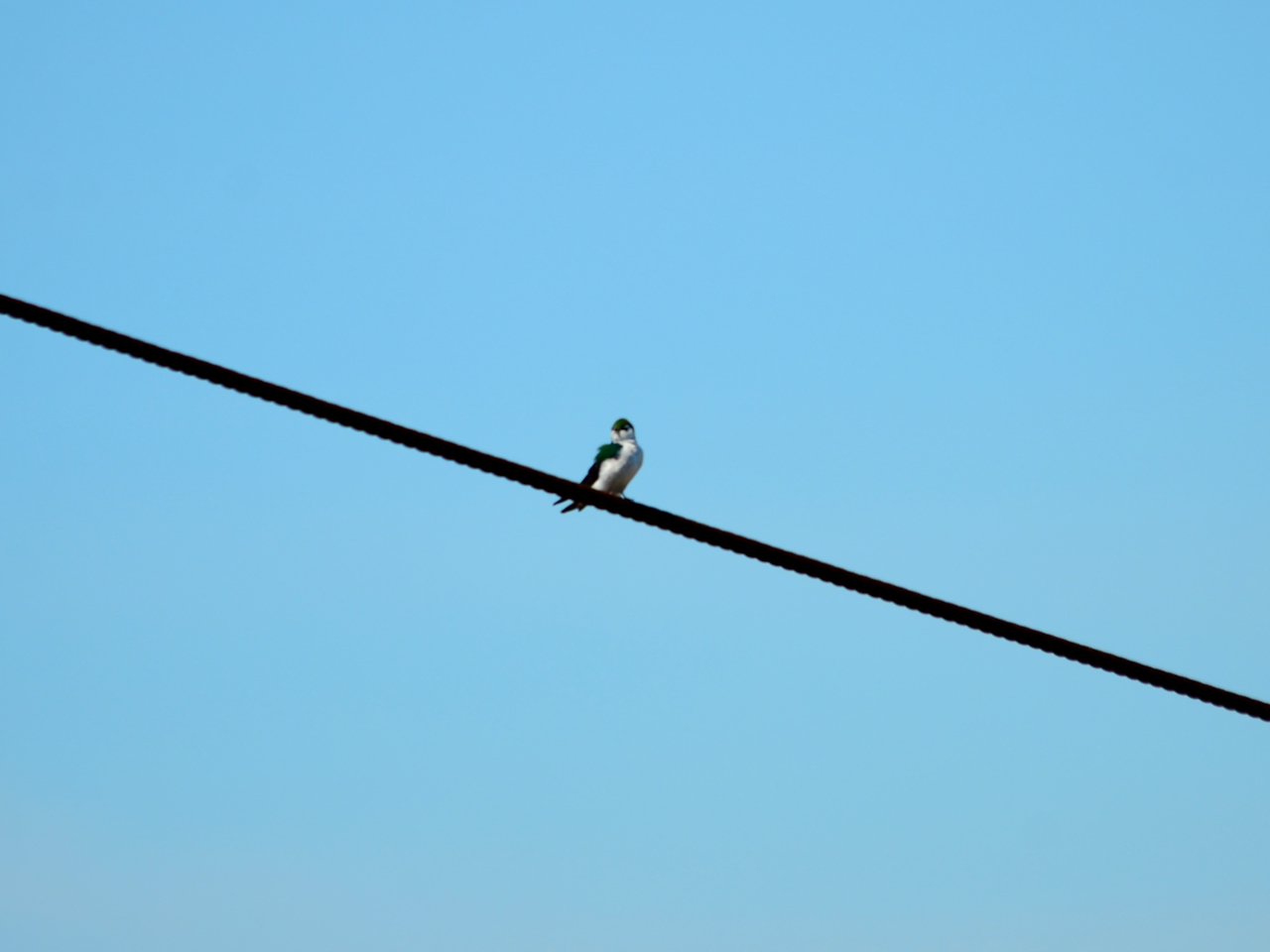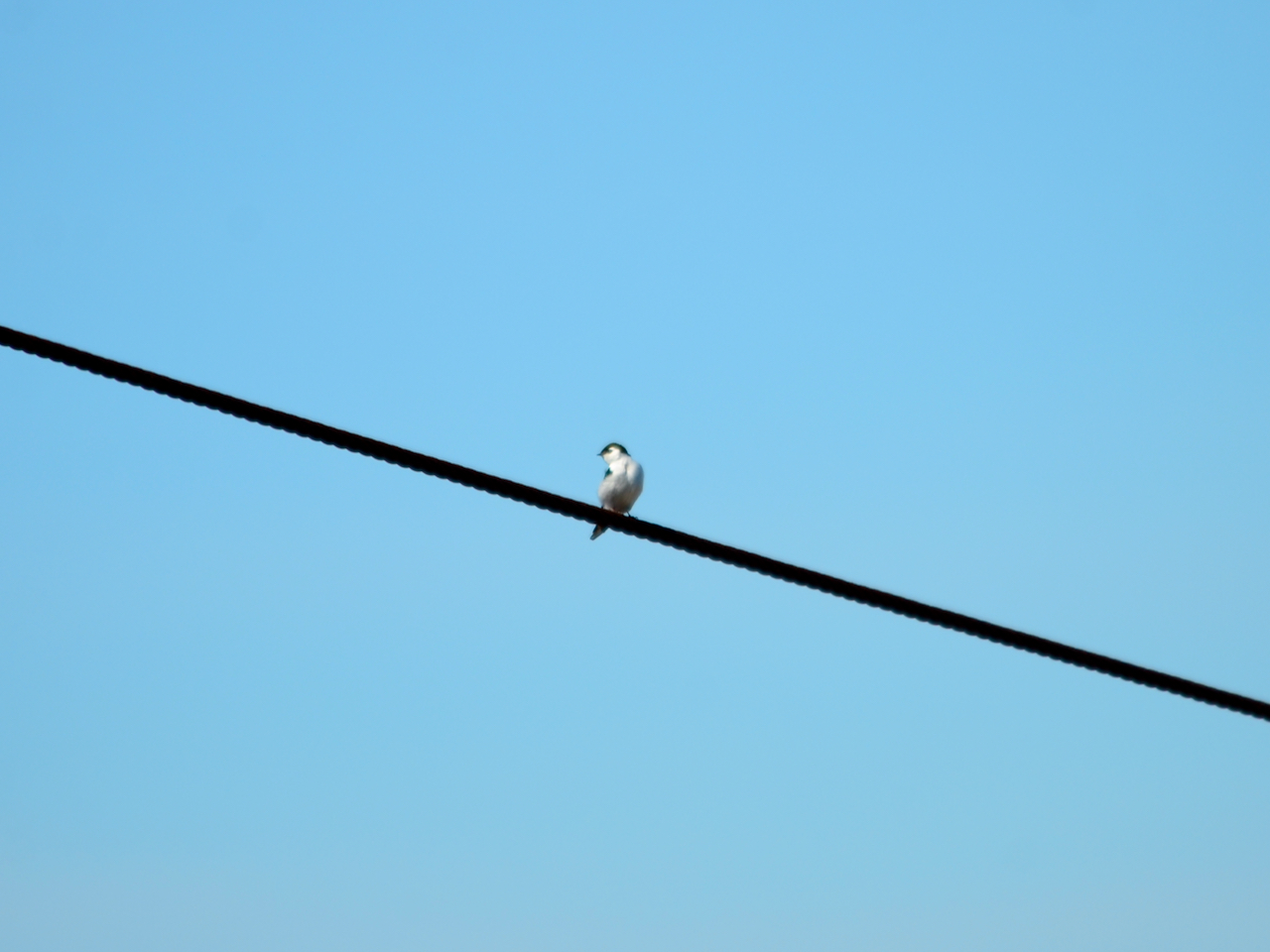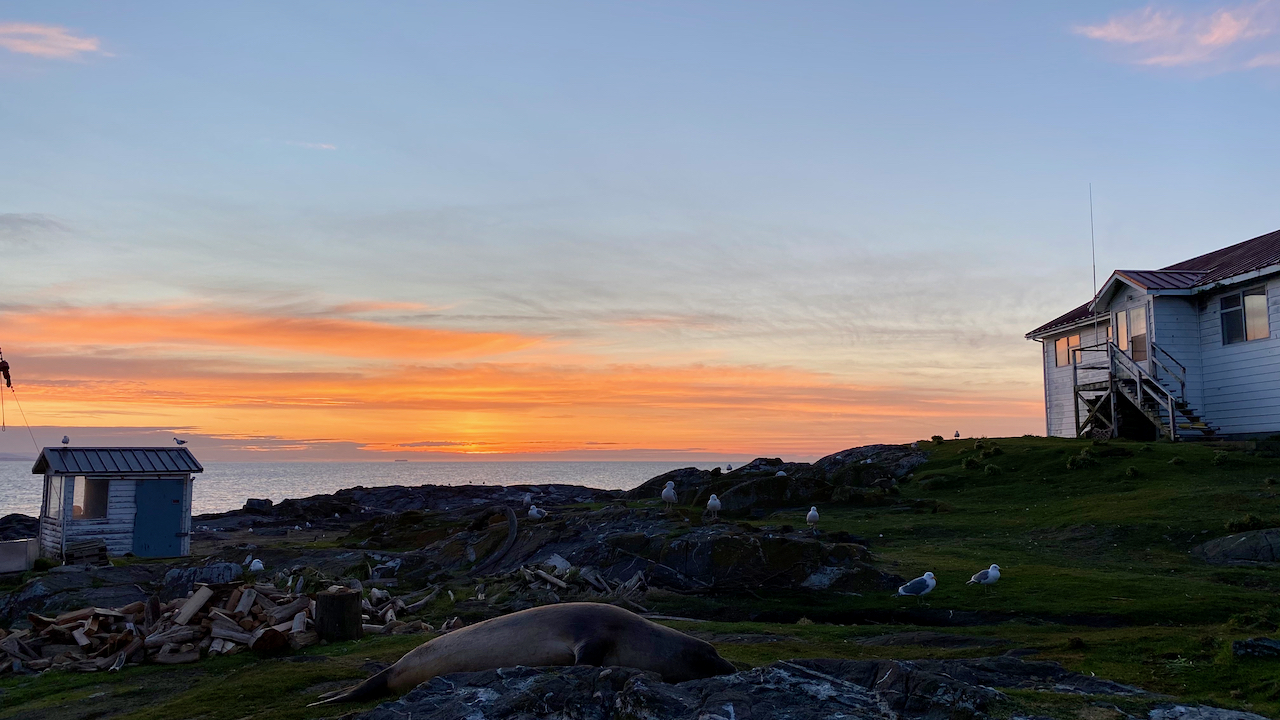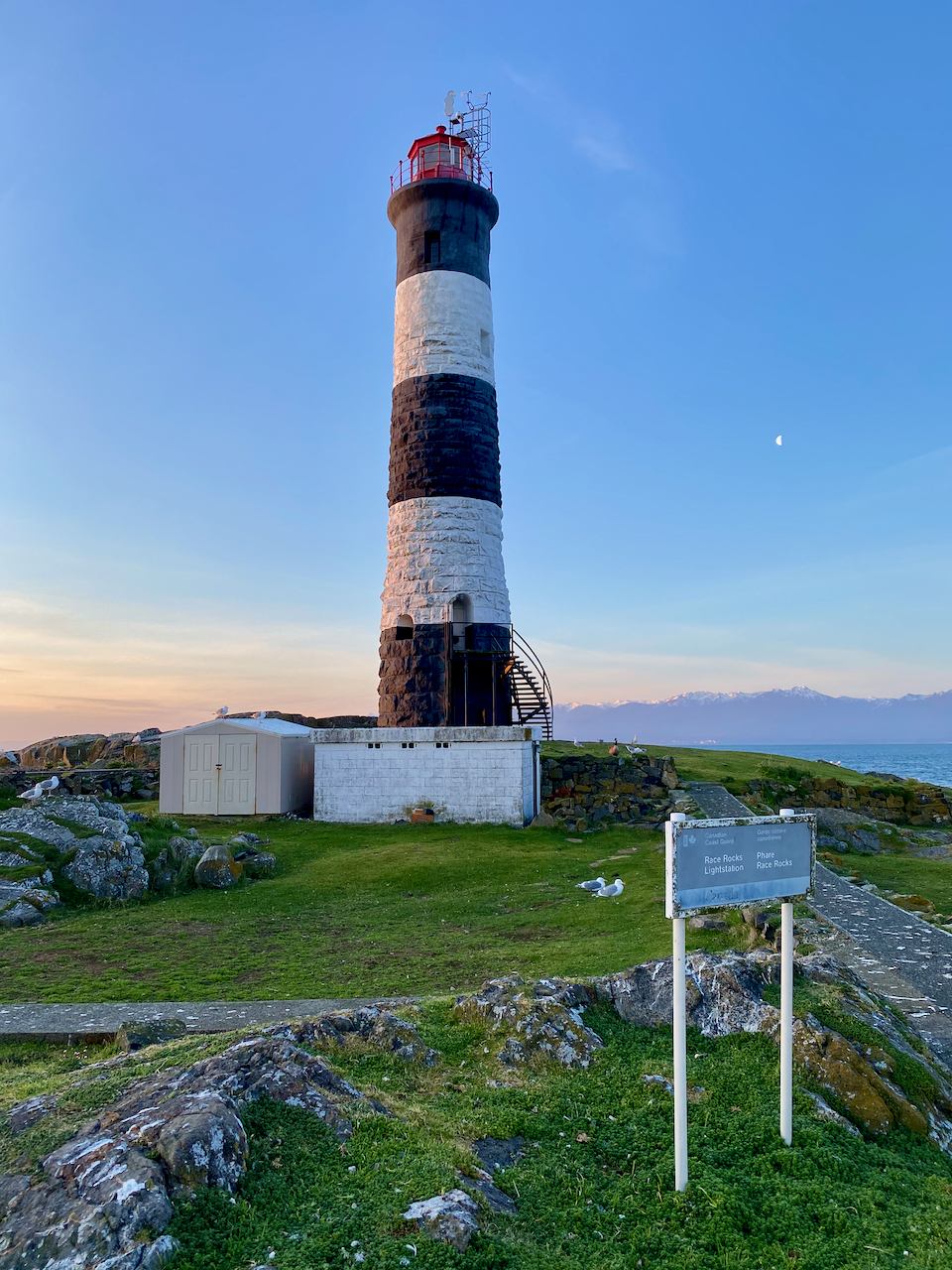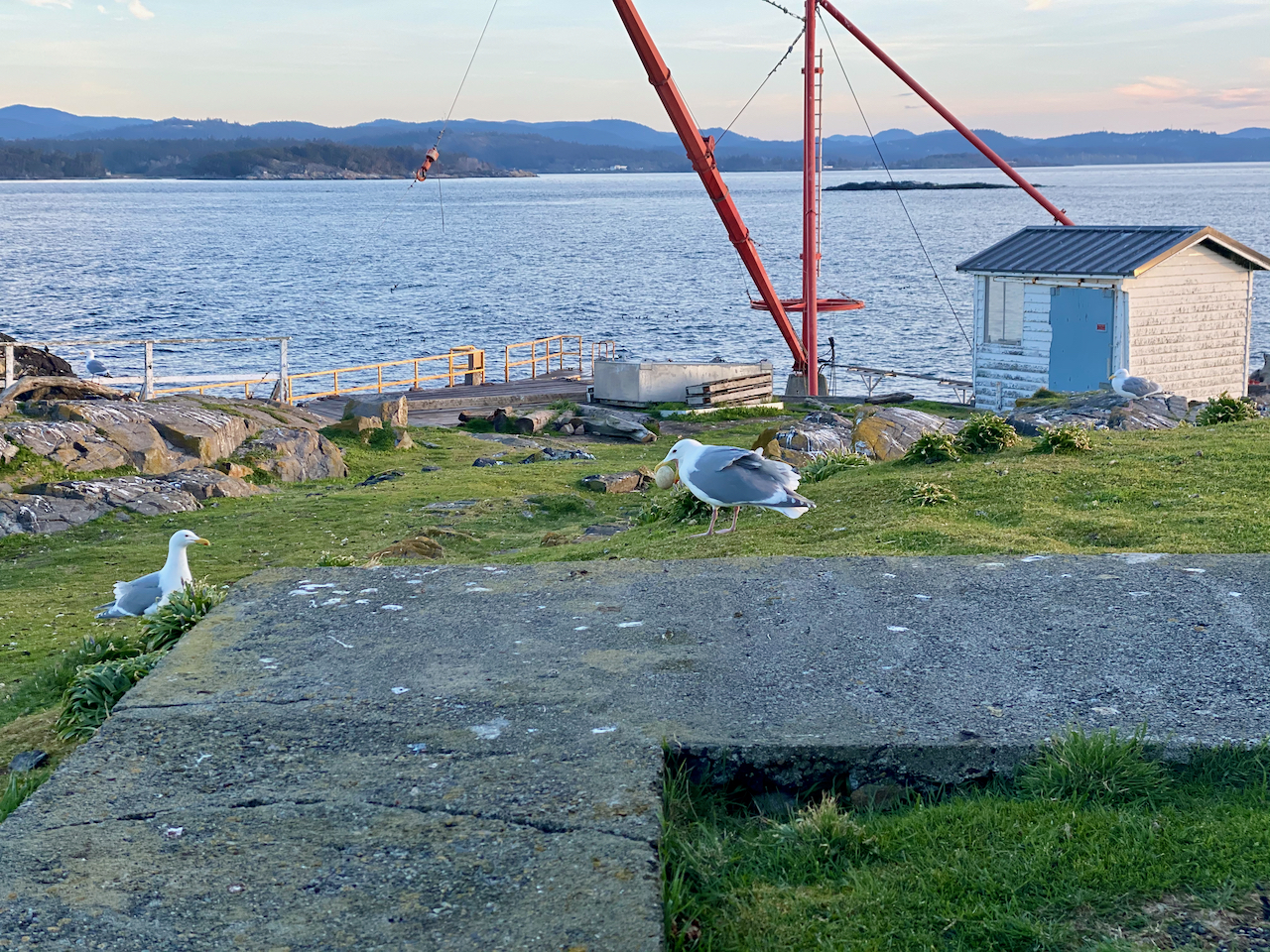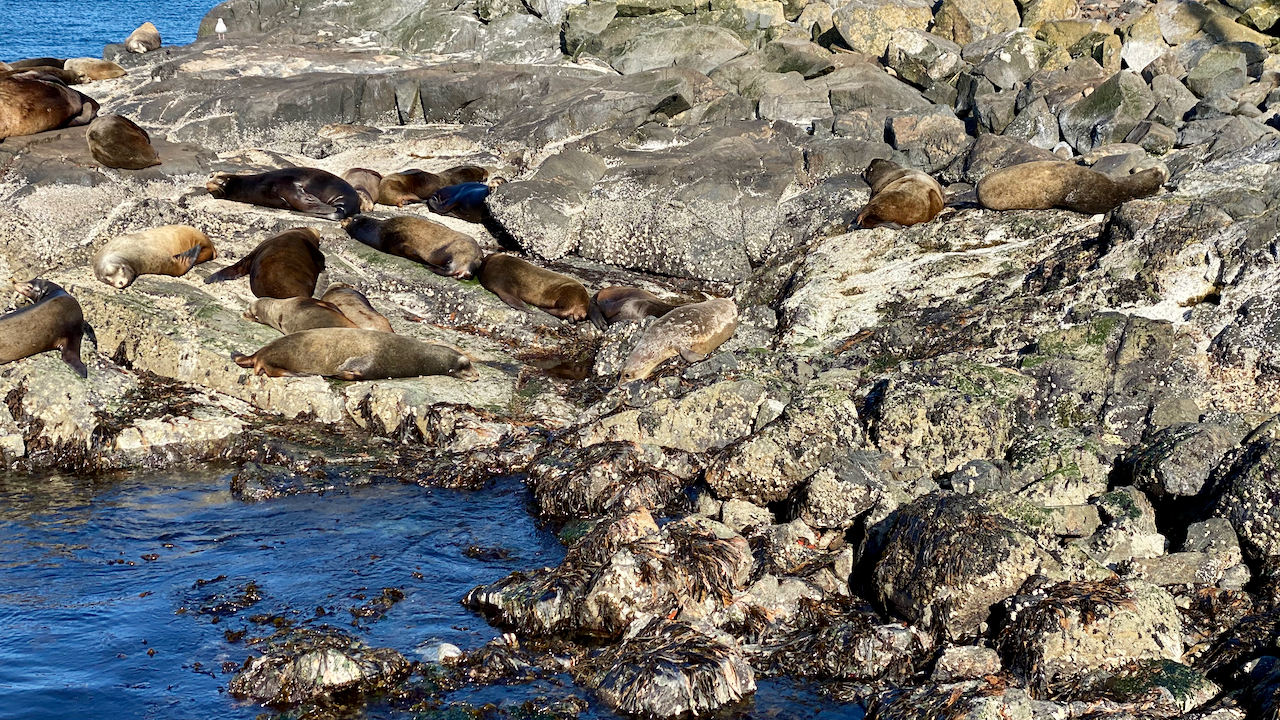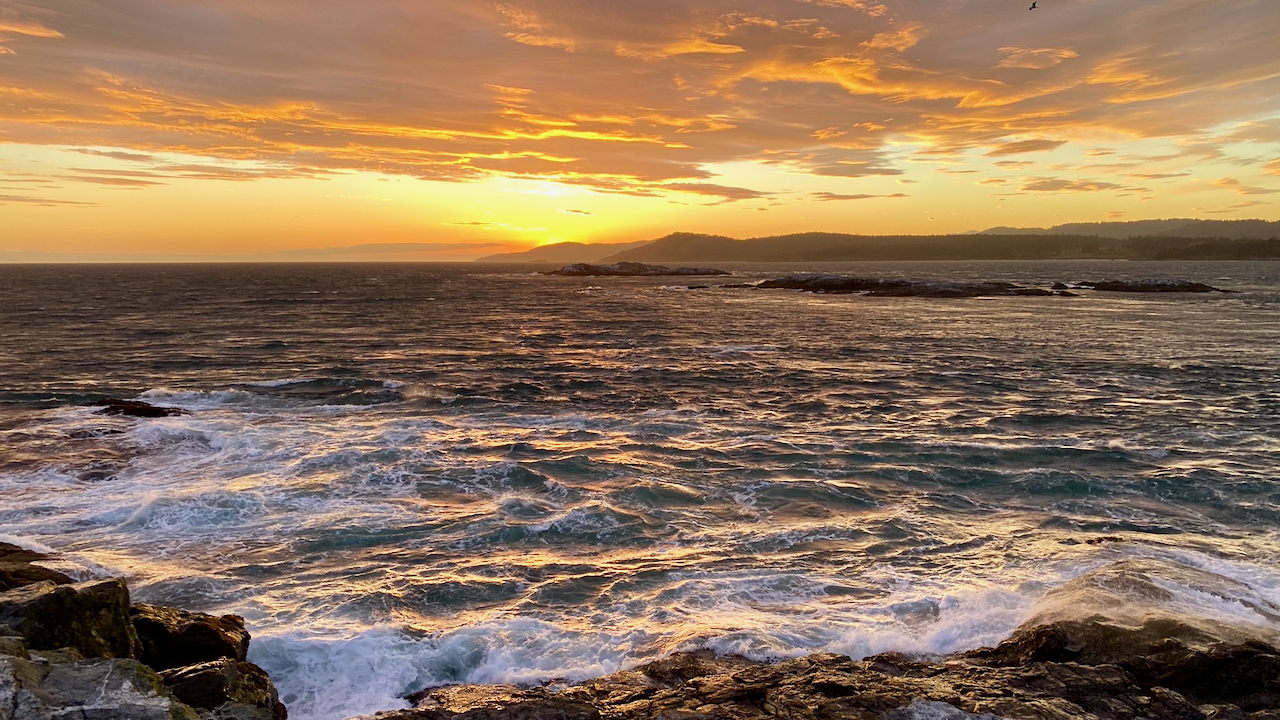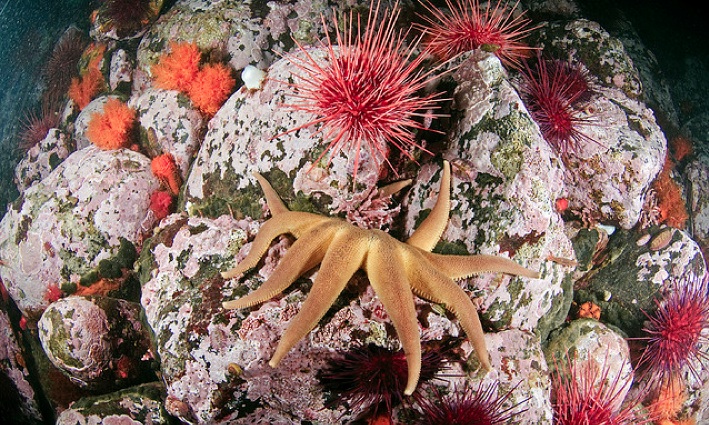Today was a cloudy and drizzly day but I managed to get a good chunk of work done, all while hanging out with Ollie the sea otter. I think that’s one of the things that makes this place so special is that you can be scrubbing bird poop off solar panels in the rain and look down and see this fuzzy little otter staring up at you. I’ve spent a lot of time working on and around the ocean and never have I experienced wildlife like this.
Since Ollie has been around so much lately I figured I’d make this post a sea otter specific one (since you might find that more interesting than hearing about the fire hoses I rolled).

Sea otters are a keystone species, meaning that other species within the ecosystem largely depend on them and without sea otters there would be drastic changes to those ecosystems. Sea otters predate on sea urchins who graze one kelp. The sea otter’s urchin heavy diet keeps the kelp forests from being decimated by urchins, and as a result kelp forests flourish in the presence of sea otters.
Urchin’s aren’t the only thing sea otters eat, you’ll also find them munching on clams, crabs, mussels, and other marine invertebrates. Adult sea otters need to eat a quarter of their weight in food a day. To put that into perspective – if you weigh 150 pounds, you’d have to eat almost 40 pounds of food PER DAY!
Sea otters do not have blubber like other marine mammals do, instead they have the densest fur of any mammal, with up to one million hairs per square inch! If they aren’t busy eating, then they are busy grooming. That much fur takes a lot of upkeep and is their only source of insulation. The constant grooming traps air and heat next to the skin, preventing the skin from getting wet and keeping them warm in the process.
Ollie, Race Rock’s resident sea otter, is one of few sea otters seen this far south in BC. He is easily recognized by his light blonde head and by the pink scar on his nose. He’s adored by many, and any day I encounter him I consider to be a great day!

Now onto the less adorable items…
Facility Work:
- Filled cistern, fresh water flushed the pump, rolled and stored fire hoses
- Cleaned solar panels
- Cleaned windows of both houses
- Chopped firewood
- Ran an equalization charge of the batteries
- Mopped basement floor
Vessel Traffic:
- 1 ecotourism vessel
- 3 private vessels
Infractions:
- 1 rental boat fishing within the reserve despite multiple communication attempts. Informed the local marina and reported to DFO
Weather:
-
- Sky: Overcast, on/off rain
- Wind: High of 4 knots, Low of 19 knots
- Sea: Calm
- Temperature: Low 9, High 11oC
** All wildlife photos taken at the furthest distance possible, and may be cropped to improve detail! **




